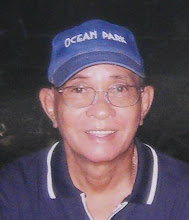INTRODUCTION
TINGKORAW, ALFONSO’S HISTORY AND LEGEND (Personal Impressions) was originally “Alfonso, Where Peace Abounds Free”. His opening tula bears out his first impression, inspired, Dr. Julian E. Aviñante states, by the era of Angeles Hernaiz who was proclaimed Outstanding Mayor and Alfonso cited as the most peaceful town in the country at a time when banditry was rampant and malcontents roamed in the mountains.
Alfonso, Cavite then with its placid and contented people was somnolent and selenic. His second poem written some 45 years later laments a pejorative change, raising an anguished cry of anger. These two poems reveal Dr. Aviñante as a passionate idealist and an ardent nationalist. He is like Voltaire’s Candide who when worse became worst would still be optimistic for he had a garden to cultivate. Out Author’s garden is
Alfonso wherein he has invested much of himself and of his time. As a genealogist, he has traced the Aviñante line through six generations. As a layman, he was deeply involved in church activities. During the time of Rev. Father Hermogenes Asilo, he was chairman of the parish church monumental restoration and renovation project.
Stoutly his faith in humanity and mankind has remained steady even as he rails against man’s crass stupidity and inane humanity.
At first glance, the Alfonso collection seems a hodgepodge of facts and legends, some of them bordering on the incredible. As much as possible Jett Aviñante identifies his sources. (As a cousin by affinity and proximity, I am privileged to call him Jett). In a few cases we have to accept the accounts as true. Many of his eyewitness sources are dead. Their stories live on in this collection of Jett. Often he went out of his way to verify “miracles” and cures. As a medical doctor, it was not easy for him to accept purportedly healing powers. In one instance, he caste a skeptical look at a close relative’s “powers” when he himself is unable to verify her cures.
The book follow a simple formula: a chronological and topical order showing the development of the town from its beginnings as a barrio of Indang, its growth and changes, its uniqueness as seen in customs, folkways and personalities. Nobody I know is more qualified to write of these than Jett Aviñante who had the persistence and wit to collect, collate and arrange those eclectic data. A poet and a physician, a concerned citizen and devout Catholic, a wise family man, Julian E. Aviñante of Alfonso, Cavite is an embodiment of Alfonso ways, a stimulating mix of the paradox of Christian faith and primitive belief, himself a psychic who hobnobbed with Alejandro Roces, Jaime Licauco, and such media people as Maria Montelibano and Loren Legarda.
Since religion plays important part in the lives, customs and folk beliefs and Alfonsinos, a section of the book takes up religious rites, festival and semi-religious beliefs, including “miracles” attributed to the local patron saint, John of Nepomucene. Our national hero Dr. Jose Rizal himself was so interested in St. John, he took time out in his travels to visit the bridge in Prague where St. John was thrown into the river for refusing to violate the secret of the confessional.
Social organizations would be of interest to the old people who can still remember the past of two or three generations ago. Younger people, future Jetts, who wonder at the weather worn inscriptions on old slabs and see the names on the walls of schools and plaza will find a few answers in this book. We admit with regret that the landmarks mentioned are limited to the poblacion, thus the collection is incomplete. But each landmark is replete with Dr. Jett’s running commentary and caustic wit. I have heard similar stories told by old folks who swear they have seen such potent powers. Alejandro Roces and Jaime Licauco have written of such psychic powers in Alfonso. She was induced by Dr. Jett Aviñante to walk on the live embers. The first take of a flustered Loren was never shown on tv but a poised and stately Loren walking confidently on live coals is on record.
A word of caution on the folkways. New customs are in, introduced by radio, television, videos and movies. But the old ways will be around for some time. What makes the book even more important is its record of beliefs that skeptic may scoff at. This is the way Alfonso was; the folkways would explain many of the traits that have kept the Afonsinos helpful to kin, generous to guests, basically stable and religious.
Trust the legends as stories, fables at one level, although many will attest to their being true. I know two old women that aver they were led astray in broad daylight by a kapre!
The personalities were important people in their heyday. The criteria have been: Who is he? What has he accomplished? How great has his influence been? And in certain historic events, what was his role? Dr. Aviñante includes eyewitness accounts of occurrence during the Japanese Occupation as they involved Alfonso and Alfonso People.
Silverio Baltasar
N.B. Silverio Baltasar (Mang Yoyo) is an Alfonso resident by affinity; his wife Rosario Aviñante Jeciel is of Alfonso and Indang parentage. Mang Yoyo is a former teacher, a writer, and a retiree raising, he says, “pigs and flowers.”
Subscribe to:
Post Comments (Atom)

No comments:
Post a Comment